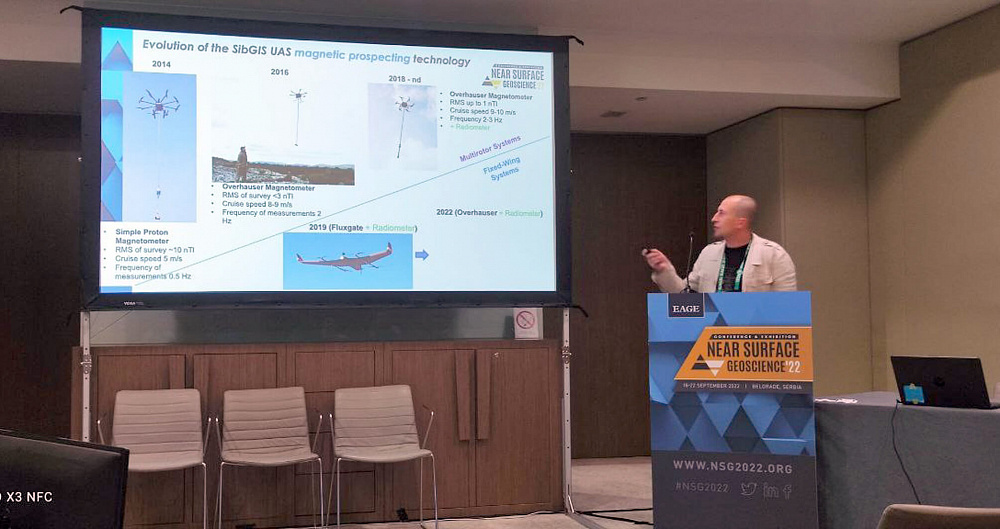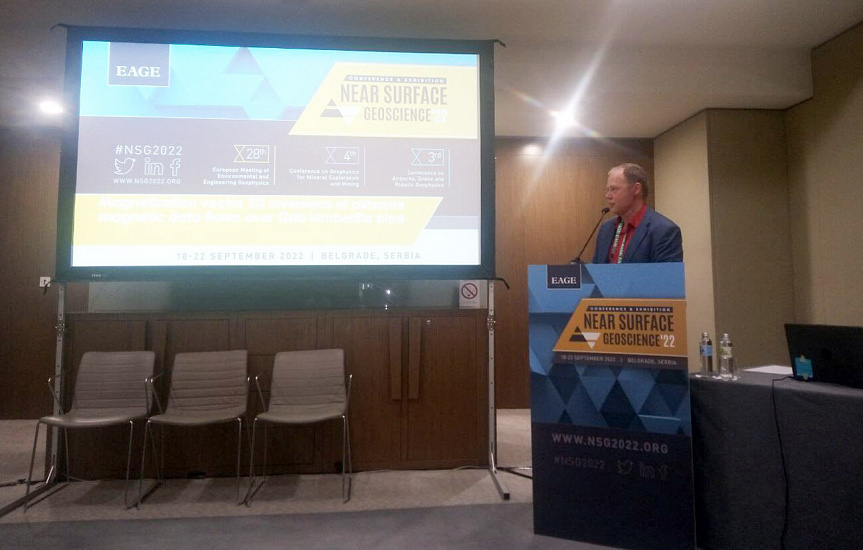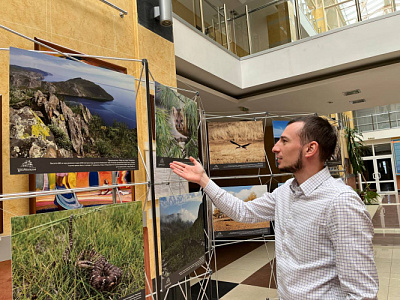Siberian School of Geosciences of INRTU - participant of international scientific conference in Serbia
According to Aleksandr Parshin, this is one of the largest events in geology, geophysics and related sciences is held in different countries every year:

" Members of the Siberian School of Geosciences at INRTU are regular participants and members of the organizing committees of conferences held under the auspices of EAGE. However, the previous two years, due to the quarantine, we had to participate only in the online format.
This year Russia was represented at the geological meeting by our colleague from St. Petersburg in addition to Irkutsk specialists".
The program of the Belgrade Scientific Forum included three events - the European Meeting on Environmental and Engineering Geophysics, the Conference on Geophysics for Exploration and Mining, and the Conference on Aerial, Unmanned, and Robotic Geophysics. The scientific leader of the Siberian School of Geosciences Alexander Parshin told his colleagues about the integration of unmanned geophysical methods, including electromagnetic probing in searching for blind ore deposits (Using the "triad" of UAV-TEM, UAV-magnetic prospecting and UAV-gamma-spectrometry: case of prospecting for blind ore deposits). This report concluded the program of the geodata combination section and aroused the interest of the colleagues.
"We were pleased to demonstrate our first working UAV electromagnetic sensing system in the time domain. It still has no analogues in the world, which was clearly seen at the end of the meeting.
The specialists working in this direction, large companies and leading research centers, of course, achieve interesting results, create their own original solutions, but no one reaches the level of actually working technologies yet. Developments of foreign colleagues are at the stage of experimental and methodological work. In our country, they are being used commercially, despite the significant number of unresolved problems," Alexander Parshin explained.
Yury Davydenko presented two reports in Belgrade. One of them was devoted to the results of experimental and methodological work with the new UAV-TEM technology on Lake Baikal (The results of experimental and methodological work with the new UAV-TEM technology on Lake Baikal). The second paper, authored by professors of INRTU Alexander Davydenko and Vladislav Kaminsky (guest), showed three-dimensional inversions with the determination of parameters of residual magnetization from the aeromagnetometer data obtained over the Grib kimberlite pipe.

"Colleagues agreed that the technologies we are presenting are at the advanced level. While Western companies are at the prototype stage, we have already taken the next step: during the current field season we tested our methods, obtaining a proven depth of 500 meters of geophysical research," said Yuri Davydenko.
As noted by polytechnic students following the results of participation in the geoforum, one of the most interesting trends in the development of applied geophysics in Europe is its increasing implementation in other areas of human activity - ecology, agroindustrial complex, climate studies, etc., with the creation of appropriate solutions. Thus, one of the most widely represented geophysical directions was non-stationary (fast) electromagnetic sounding in walking and marine versions to study the near-surface of the earth. At an exhibition in Belgrade, several firms were demonstrating such systems in the interest of studying agricultural land for salinity and soil salinity before the sowing season, searching for groundwater, etc.
"There is a boom in the development of rapid mobile systems in Europe -- floating, walking or riding. We have been using similar methods in ore geology for years (https://vk.com/video-139054627_456239346), but our systems are oriented to the study of depths from tens of meters, and they are far from user-friendly.
If a few years ago agronomists or archaeologists hardly knew about geophysical methods of electromagnetic probing at all, but now such technologies occupy quite a serious segment of the market and without them it is already impossible to imagine precise farming or construction. All the equipment is tuned to the first meters of the earth's surface, and such methods are not suitable for ore geology. However, the very history of how geophysics is being transformed to the tasks of new industries, further enriching various areas of human activity, is inspiring," Alexander Parshin believes.








